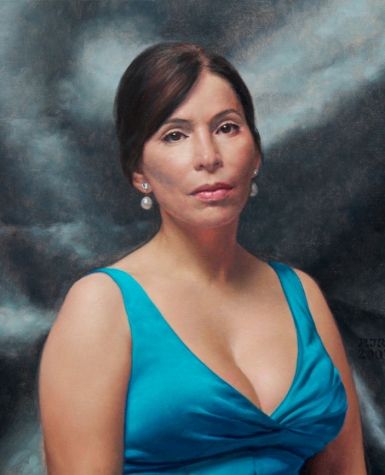Fine Art

Painting on a Toned Ground
A note on grounds:
In painting parlance the ‘ground’ is the primer, sometimes called gesso, applied to the panel or canvas on which we paint. Painters work on a number of different grounds: traditional gesso (water-based, used on panels exclusively), oil grounds (lead and titanium-zinc are the two most common), half-oil (an emulsion of traditional gesso and oil), and acrylic (water-based polymer w/titanium-zinc). Over the years, I’ve worked on all these. At the present time I mostly paint on double lead-primed linen canvas.
If you take a look the Form Painting page on this site, you will notice that after doing the poster study I started on a white canvas. I then do a charcoal drawing, followed by a color wash, and after that the final, opaque paint layer.
In painting on a toned ground, I skip the charcoal drawing and the underpainting. Instead, I tone the ground with a neutral wash. In the painting below, I used a dilute mixture of raw umber and ivory black, thinned in OMS (odorless mineral spirits). I combine the raw umber and black to produce a warm grey.
Once the tone is dry (I prefer to tone the canvas a day or two before I start the painting), I draw out the composition in paint. I find that Deep Ochre (Old Holland) works pretty well for the drawing. I use small bristle filberts and acrylic rounds for this stage. Drawing with a brush is different from drawing with charcoal or pencil. It takes some getting used to, but once you are used to it, I think you will find that you like it very much.
Once the drawing is in, I go directly into the form painting.
Visit www.theryderstudio.com for more information on art classes.